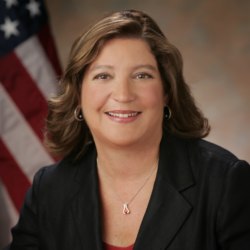Union membership has declined – but are they less influential?
Since I served in the leadership of several national business associations and was formerly the Regional Representative at the U.S. Department of Labor, I’m often asked about the power of unions vs. the power of business.
I always answer the question the same way:
There is no such thing as unorganized labor. Unions almost always out-organize business associations.
Last week, the U.S. Department of Labor’s Bureau of Labor Statistics released its annual study of union members. The study is released each January and examines union member rates, occupations, representation, earnings, and other characteristics that define unions for the year prior.
In 2012, the union membership rate was 11.3%, a decline of half a percent from 2011′s figure of 11.8%. Traditionally over the last twenty years, union membership has been on the decline, largely due to the impact of new technologies and employer’s interest in increased productivity.
However, public sector workers have a union membership rate of 35.9% nationwide – more than five times higher than private sector workers, at 6.6%.
That’s 7.3 million employees in the public sector alone. Local government workers had the highest union membership for public sector unions, at 41.7%.
By occupation, the highest unionization rates were for workers in education, training and library professions as well as those in protective service occupations. Blacks were more likely to be union members than were whites, Asians, or Hispanics.
You can view the full report here which has breakdowns by state, gender, race, age, occupation, industry, and other variables.
Many people think that since unions are declining, their influence is as well. But it’s not true.
A vast majority of America’s workforce – 88.7% – do not belong to a union. Yet unions continue to exert more and more power when it comes to elections, especially in progressive states.
Everyday Americans who don’t worry about unions should heed this advice: Follow the money.
Though history tells us that unions were at their peak in the 1950′s, one would only need to look at the last couple of election cycles, especially in states like California, to see their continued influence.
California Gov. Jerry Brown’s Proposition 30, called the ”Schools & Local Public Safety Protection Act” had strong support from education and public safety unions as well as environmental special interests and other progressive associations.
Taxpayer groups opposed the measure because California has the highest sales tax and gas tax, the second highest income tax, and the third worst business tax climate in the United States. Yet, business groups split on the measure and unions stayed together, forming a coalition that couldn’t be beat.
California’s Proposition 32, known as Stop Special Interests Now, would have limited the impact of union and corporate dollars in the state’s campaigns, but it had the unfortunate consequence of actually drawing more union members who opposed the measure to the polls. This led to a sweeping California super majority by Democrats in both houses of the legislature.
California’s legislative caucuses are so overwhelmed by progressives that even Gov. Jerry Brown is worried about his vetoes being overturned by members of his own party. He can’t control it and neither can citizens who live in California. But, it is the government they voted for.
It’s easy to see why voters are easily swayed by clever messaging and the all-American point of view that they see from modern day unions. Just look at who takes care of your kids during the day, who guards your communities, and who takes care of you when you are impaired or ill.
Public servant unions include firefighters, police, nurses, and teachers. These unions join together with other unions to form an integrated network. The AFL/CIO is historically the most well known umbrella of unions, and has been characterized as the network with the most union “bosses”.
However, in 2005, the Change to Win Federation (CtW) was formed to split up the AFL/CIO and form a more nimble, technology driven organizing model that is built for modern day campaigns. It’s main membership unions are the The International Brotherhood of Teamsters (IBT); Service Employees International Union (SEIU); United Farm Workers (UFW); and United Food and Commercial Workers (UFCW).
But it doesn’t stop there. These organizational networks often become intertwined with other progressive and liberal interest groups to form powerful and sometimes militant demonstrations. Occupy Wall Street is one such example, which was replicated in major urban areas around the country.
Modern day unions still have an amazing and vast network that has an immeasurable influence. While union membership is declining, their influence, financial clout and ability to organize continues to be stronger than ever.
Judy Lloyd is the president of Altamont Strategies. This article originally appeared on the website ThoughtfulWomen.org, and appears here with permission from the author.
